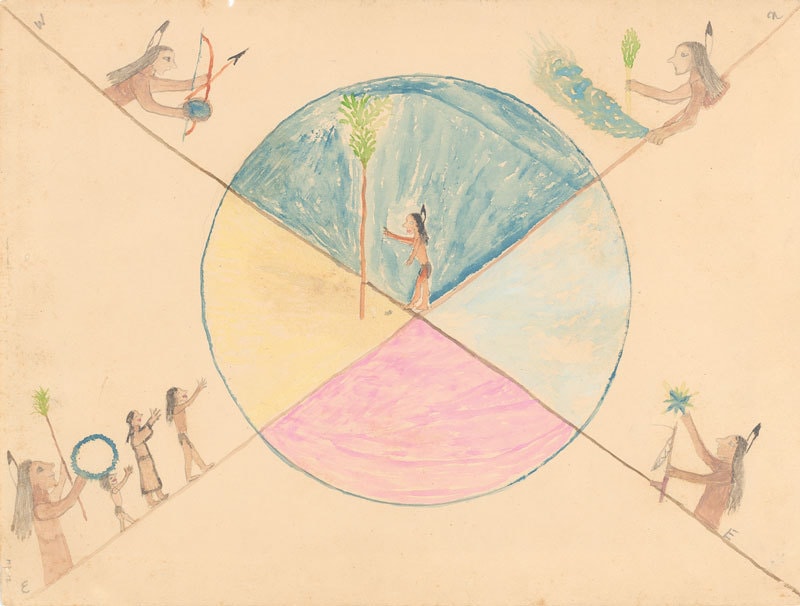
When I first arrived at MU in 1975, Columbia didn’t even have cable TV.
But, the History Department offered “Epic America,” a pair of courses on Native American culture in a kind of primitive virtual classroom — just a black and white monitor bolted to the wall of a second floor Arts and Sciences classroom.
The courses were “taught” by the recently deceased MU professor, John G. Niehardt. The irony of his spirit continuing to serve as a post-emeritus dragoman to the native mythos of prairie and plains.
Although best known as the Poet Laureate of his native Nebraska, Niehardt spent 25 years teaching English at the University of Missouri, and died a Columbia resident in 1973.
In 1930, Niehardt went to the Pine Ridge Indian Reservation to study the Oglala Sioux tribe’s Ghost Dance Movement of the late 19th Century. There he met the tribe’s spiritual leader Black Elk, along with Standing Bear, a Mincinjou Sioux Warrior and artist, who was a lifelong friend of Black Elk. Both men had survived both the Battle of Little Big Horn and the cataclysmic Massacre at Wounded Knee years later.
After a series of interviews with Black Elk, Niehardt published the now classic “Black Elk Speaks,” a poetic exploration of native spirituality with colorful illustrations by Standing Bear.
Neihardt’s personal library is housed at the University of Missouri Libraries Division of Special Collections, Archives, and Rare Books. His papers are a part of the State Historical Society of Missouri. Both repositories are housed in Ellis Library at the University of Missouri.
The State Historical Society of Missouri has mounted an exhibition “From Boone to Black Elk,” which features the rarely exhibited Standing Bear illustrations for “Black Elk Speaks,” alongside Edward Curtis’ iconic photogravures of American Indian life and several pieces of art and ephemera relating to the enigmatic yet emblematic Daniel Boone (including Chester Harding’s one-of-a-kind portrait of the frontiersman, which is on long-term loan from the Smithsonian’s National Portrait Gallery).
This exhibition focuses on both Black Elk and Boone as cultural intercedents who navigated the “middle ground” between white and native traditions.
On January 28th at 1:30 p.m., Art Curator Joan Stack will walk through “From Daniel Boone to Black Elk: Native and Colonial Experiences in Contested Middle Grounds,” and explain how the artworks reflect the complex relationships between Native and European Americans in the 19th and early 20th centuries.
The year 2016 marked the deaths of many significant musicians, writers and artists from Prince to David Bowie, but I’d like to take this opportunity to mark the loss of someone closer to home, who was significant to me and many like me.
Though John “Deke” DiCresenzo was certainly a unique personality, a raconteur and record rat, he was also a part of a dying breed. I am speaking of his function in the artistic community as an informed observer, an acerbic arbiter whose au fait judgments (in record stores, movie theaters and at parties) I found enormously entertaining and always informative. He was indispensible if he was available.
Since the advent of the interwebs, everybody has become a sort of “flaneur” in their own right, and the function of the “town scold” for the Arts Community has been diminished, but, regrettably, so has the style with which Deke and his ilk have carried it off. He will, as I like to say at times of great loss like this, be a long time gone.


